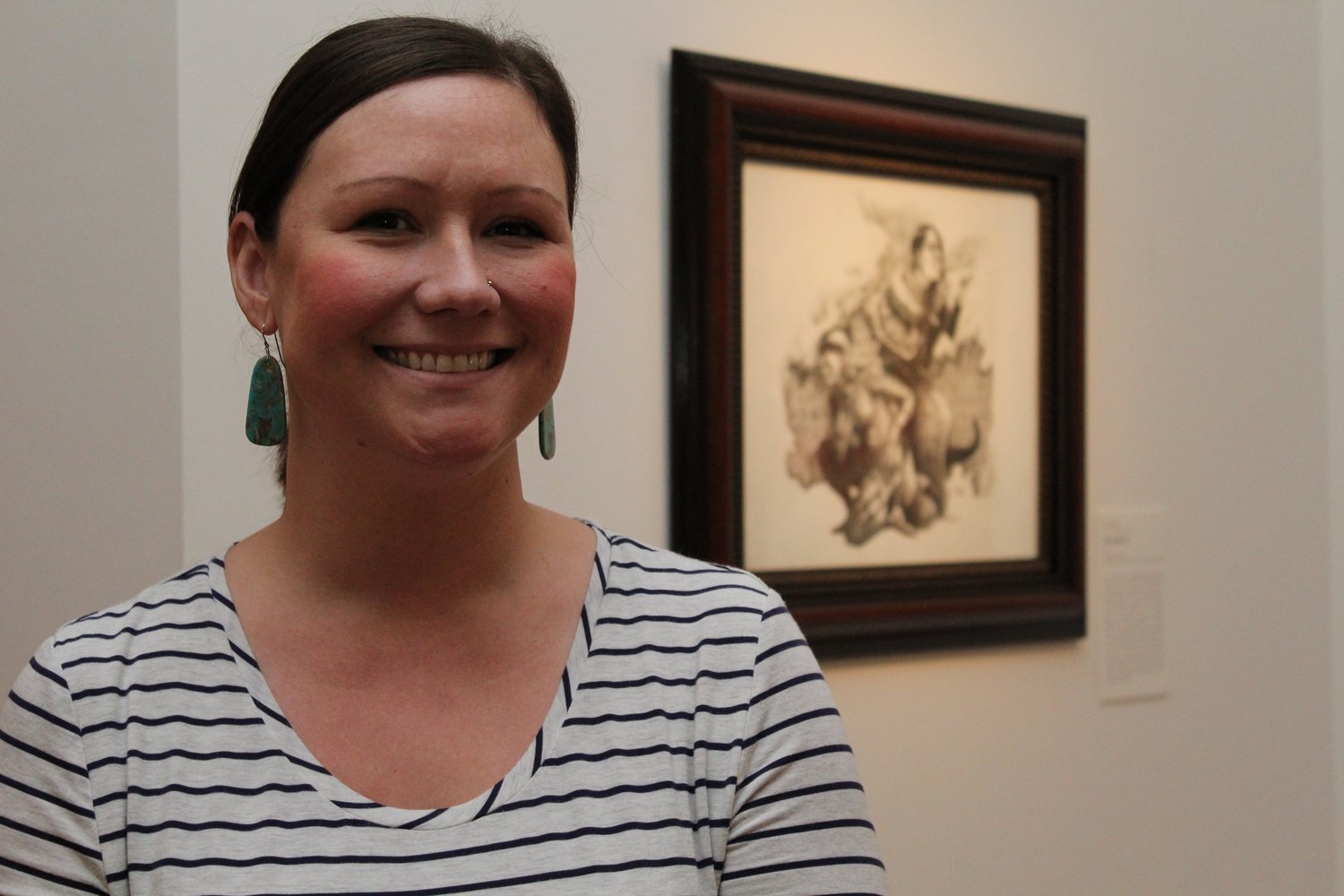
Knowledge is Necessary: Parlor Interviews Ashley Holland, Art Bridges’ Assistant Curator
By Samantha Sigmon
I met Ashley Holland through my job, sort of. She works in the same building as Crystal Bridges Museum of American Art, but her position is adjacent to the institution as Assistant Curator for Art Bridges, a foundation started by Alice Walton with the mission to make art available to everyone. So instead of bringing art into the museum space, Holland’s job is to curate exhibitions that move out into other institutions around the United States, with special attention to those organizations that might not have the means to show nationally-recognized artworks in their community
Holland has lived in Northwest Arkansas since she started with Art Bridges last summer, and I first realized how important she was for the region as I was working through content as the interpretation manager on the exhibition Art for a New Understanding: Native Voices, 1950s to Now, which debuted at Crystal Bridges in Fall 2018 and is now touring around the US. She was an invaluable resource to discussing the complicated issues around contemporary Indigenous artworks, and was my go-to for talking through the nuisances of language with text and interpretives around the show. Her kindness in breaking down these topics in a way staff could understand, but also be inspired by, has excited me for what she can do in the future in this institution and in the greater community. So, I was thrilled to discuss her passions and hopes for the future and introduce NWA to Ashley Holland.
Parlor: What makes you invested in your current job?
AH: Art Bridges allows me to work directly with a growing collection of American art and to even challenge what that means. I also get to work with a lot of small to mid-size museums that have had barriers of access in a variety of ways and to help them realize their goals. Art Bridges is a young foundation, but it has the desire to facilitate, through collaboration and partnerships, the type of impact Crystal Bridges has in Northwest Arkansas. I love that I get to be a part of that vision.
Parlor: Tell us about your background.
AH: My BA is from DePauw University where I double majored in art history and religious studies with a minor in French. I have a MA from Indiana University-Indianapolis in Museum Studies where I focused on curatorial practices and Indigenous art and representation. I’ve completed my coursework and just recently reached ABD (all but dissertation) status at the University of Oklahoma (OU) where I am getting my doctorate in art history with a focus on Native American art. I just defended my dissertation proposal and plan to finish in 2021.
After I finished my masters in 2007, I worked as an assistant curator at the Eiteljorg Museum in Indianapolis for almost ten years. I had a wonderful Mellon internship at the Fred Jones Jr. Museum of Art at OU while I was doing my doctorate coursework. I was also lucky enough to work as a studio assistant for artist Holly Wilson during my time at OU.
Parlor: What are your academic interests and how do they tie in to some of your favorite artists?
AH: I have so many favorite artists it’s definitely hard to pick just a few, but some that spring to the top are Jim Denomie, Julie Buffalohead, Edward Poitras, Norman Akers, Postcommodity, Anita Fields, Yatika Fields, Marwin Begay, James Luna, and of course Holly Wilson. Honestly, it would probably just be easier to say all the artists in the Art for a New Understanding exhibition and those that I worked with through the Eiteljorg Fellowship.
My constant passion are works by Indigenous artists, both from a personal and professional standpoint. But the great thing about the Art Bridges collection is that it has also allowed me to expand my knowledge of non-Indigenous artists, so my list keeps growing.
Parlor: From your studies and your personal background, what is an important concept for people of this country to understand about Indigenous art today?
AH: I was lucky OU offers classes in Native American studies that allowed me to gain more knowledge about Indigenous issues that go beyond art. I think when you talk and study and curate Indigenous art, whether you are Indigenous or not, that knowledge is necessary. I have my own personal knowledge as a citizen of the Cherokee Nation, but that in no way makes me an expert in all things Indigenous. In many ways, it makes me hyper aware of the things I don’t know and where my knowledge needs to grow. The lack of understanding of Indigenous history and issues in this country is staggering. We are all living on stolen land: it’s a simple fact. And it’s something rarely acknowledged if even understood.
Parlor: What worries you about the state of the world today, and what gives you hope?
AH: I worry about what we are doing to the environment. This earth, which has provided for us and our ancestors, will also provide for our descendants. Convenience supersedes sustainability and it’s a dangerous path.
I also see the world children are growing up in now, and it is very different than the one I knew, and it both frightens me and gives me hope. I see a lot of potential in the youth of today. I think they have the ability to make real change in the world, as long as we are willing to listen and respond in a way that puts the needs of future generations over our own selfish concerns.
Parlor: What role does art play in answering the question above?
AH: Art is one of the most important aspects of my life. I grew up outside of the Cherokee community in a family that had lost a lot of the knowledge of being Cherokee. Art provided me a way to reconnect with that part of myself. And it has opened the doors to a career path that I love and am wholeheartedly committed to, even when it feels like an uphill battle. I see in art all the hopes for a future that is bright and beautiful and a present that wants to make it a reality.
Parlor: Given our title, Parlor, describe your ideal home living room. Who/what is in it?
AH: The living room is really the heart of my home. It requires a comfy couch and TV with Netflix and Hulu. Also lots of windows and natural light. With all of our recent moves, the living room is always the first place to be set up. You can usually find me lounging on the couch with Ryan, my husband, and our pets all around us.
